MIT Lesson 15 Kanji: �$BBh#1#52]$N4A;z�(B
 Each large, brush-stroke image below which shows
up as a hypertext link (e.g. has a colored box around it) is a link to a 1 Megabyte
(or less) QuickTime movie of the character being painted with a brush.
Each large, brush-stroke image below which shows
up as a hypertext link (e.g. has a colored box around it) is a link to a 1 Megabyte
(or less) QuickTime movie of the character being painted with a brush.
JP NET is grateful to Prof. Saeko Komori
of Chubu University for
permission to use the kanji movies at our site. All movie data is
copyright 1995, 1996 by Saeko Komori.
In the following definitions, on (Chinese-based) readings
are represented by katakana, and by capital romaji letters;
kun (native Japanese-based) readings are represented by
hiragana, and by lower-case romaji letters. This is a common
dictionary convention, and does not have any bearing on meaning.
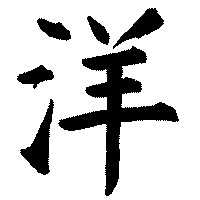
- Printed form:
- �$BMN�(B
- Readings:
- �$B%h%&�(B
- YOO
- Meaning:
- western
- Mnemonic:
- The water radical on the left and a character for "sheep" �$BMS�(B.
- Usage Examples:
- �$BMN?)�(B (�$B$h$&$7$g$/�(B) Western-style meal
- �$BMN<<�(B (�$B$h$&$7$D�(B) Western-style room
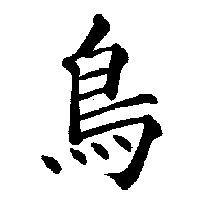
- Printed form:
- �$BD;�(B
- Readings:
- �$B$H$j�(B
- tori
- Meaning:
- bird
- Mnemonic:
- A picture of a bird.
- Usage Examples:
- �$BD;�(B (�$B$H$j�(B) bird
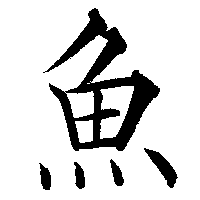
- Printed form:
- �$B5{�(B
- Readings:
- �$B$5$+$J�(B
- sakana
- Meaning:
- fish
- Mnemonic:
- A picture of fish.
- Usage Examples:
- �$B5{�(B (�$B$5$+$J�(B) fish
- �$B5{20�(B (�$B$5$+$J$d�(B) fish store
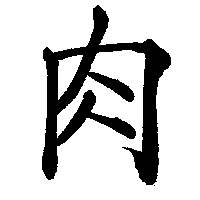
- Printed form:
- �$BFy�(B
- Readings:
- �$B$K$/�(B
- niku
- Meaning:
- meat
- Mnemonic:
- A sletch of a lump of meat with threads. (�$BFb�(B inside)
- Usage Examples:
- �$BFy�(B (�$B$K$/�(B) meat
- �$BFy20�(B (�$B$K$/$d�(B) butcher
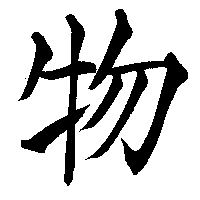
- Printed form:
- �$BJ*�(B
- Readings:
- �$B$b$N�(B
- mono
- Meaning:
- thing; object
- Mnemonic:
- A cow �$B5m�(B and a pig �$BFZ�(B. They are precious things to farmers.
- Usage Examples:
- �$B?)$YJ*�(B (�$B$?$Y$b$N�(B) food
- �$B0{$_J*�(B (�$B$N$_$b$N�(B) beverage
- �$BGc$$J*�(B (�$B$+$$$b$N�(B) shopping
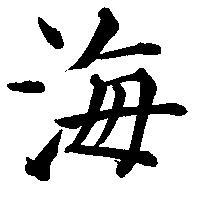
- Printed form:
- �$B3$�(B
- Readings:
- �$B%+%$�(B/�$B$&$_�(B
- KAI/umi
- Meaning:
- sea
- Mnemonic:
- The sea is the place where every �$BKh�(B drop of water flows into.
The sea is also Mother �$BJl�(B of living things.
- Usage Examples:
- �$B3$�(B (�$B$&$_�(B) sea
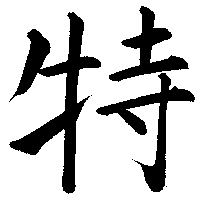
- Printed form:
- �$BFC�(B
- Readings:
- �$B%H%/�(B
- TOKU
- Meaning:
- special
- Mnemonic:
- A special cow �$B5m�(B kept at a temple �$B;{�(B.
- Usage Examples:
- �$BFC>e�(B (�$B$H$/$8$g$&�(B) super-deluxe (sushi)
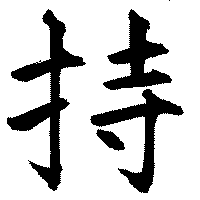
- Printed form:
- �$B;}�(B
- Readings:
- �$B$b�(B-
- mo-
- Meaning:
- hold
- Mnemonic:
- The hand radical on the left and a temple �$B;{�(B.
(�$B;~�(B time; �$BBT$D�(B wait; �$BFC�(B special)
- Usage Examples:
- �$B;}$D�(B (�$B$b$D�(B) to hold
- �$B;}$C$F9T$/�(B (�$B$b$C$F$$$/�(B) to take with oneself
- �$B;}$C$FMh$k�(B (�$B$b$C$F$/$k�(B) to bring with oneself
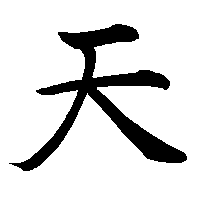
- Printed form:
- �$BE7�(B
- Readings:
- �$B%F%s�(B
- TEN
- Meaning:
- heaven
- Mnemonic:
- A big man �$BBg�(B under the heaven.
- Usage Examples:
- �$BE7$W$i�(B (�$B$F$s$W$i�(B) tempura
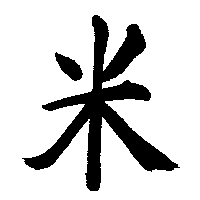
- Printed form:
- �$BJF�(B
- Readings:
- �$B$3$a�(B/�$B%Y%$�(B
- kome/BEE
- Meaning:
- rice; America
- Mnemonic:
- A few grains together.
- Usage Examples:
- �$BJF�(B (�$B$3$a�(B) uncooked rice
- �$BJF9q�(B (�$B$Y$$$3$/�(B) U.S.A.

- Printed form:
- �$BNA�(B
- Readings:
- �$B%j%g%&�(B
- RYOO
- Meaning:
- material; fee
- Mnemonic:
- A measuring cup �$BEM�(B and raw rice �$BJF�(B.
- Usage Examples:

- Printed form:
- �$BM}�(B
- Readings:
- �$B%j�(B
- RI
- Meaning:
- reason; basic principle
- Mnemonic:
- A king �$B2&�(B of a village �$BN$�(B who makes orders. (�$BLn�(B field)
- Usage Examples:
- �$BNAM}�(B (�$B$j$g$&$j�(B) cooking
- �$BF|K\NAM}�(B (�$B$K$[$s$j$g$&$j�(B) Japanese food

- Printed form:
- �$BA4�(B
- Readings:
- �$B%<%s�(B
- ZEN
- Meaning:
- whole; total
- Mnemonic:
- A ruling king �$B2&�(B in a castle with a pointed roof.
- Usage Examples:
- �$BA4It�(B (�$B$<$s$V�(B) all
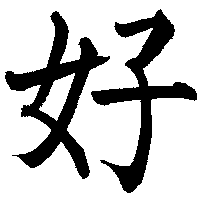
- Printed form:
- �$B9%�(B
- Readings:
- �$B$9�(B- (su-) like; favorable
- Mnemonic:
- Mother and child. They love each other.
- Usage Examples:
- �$B9%$-$@�(B (�$B$9$-$@�(B) (I) like (something).
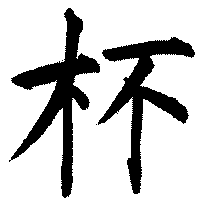
- Printed form:
- �$BGU�(B
- Readings:
- �$B%O%$�(B/�$B%P%$�(B/�$B%Q%$�(B
- HAI/BAI/PAI
- Meaning:
- (classifier -cupfuls)
- Mnemonic:
- �$BIT�(B means "negative"--the wine is not yet drunk in a wooden cup.
- Usage Examples:
- �$B0lGU�(B (�$B$$$C$Q$$�(B) one cup
- New Readings:
- �$B2?L>�(B (�$B$J$s$a$$�(B) how many people
- �$B30$NE9�(B (�$B$[$+$N$_$;�(B) other stores
- �$B9q�(B (�$B$/$K�(B) country; your hometown
- �$B$a$7>e$,$k�(B (�$B$a$7$"$,$k�(B) to eat; to drink (honorific)
[J3 Kanji]
 Each large, brush-stroke image below which shows
up as a hypertext link (e.g. has a colored box around it) is a link to a 1 Megabyte
(or less) QuickTime movie of the character being painted with a brush.
Each large, brush-stroke image below which shows
up as a hypertext link (e.g. has a colored box around it) is a link to a 1 Megabyte
(or less) QuickTime movie of the character being painted with a brush.  Each large, brush-stroke image below which shows
up as a hypertext link (e.g. has a colored box around it) is a link to a 1 Megabyte
(or less) QuickTime movie of the character being painted with a brush.
Each large, brush-stroke image below which shows
up as a hypertext link (e.g. has a colored box around it) is a link to a 1 Megabyte
(or less) QuickTime movie of the character being painted with a brush. 













